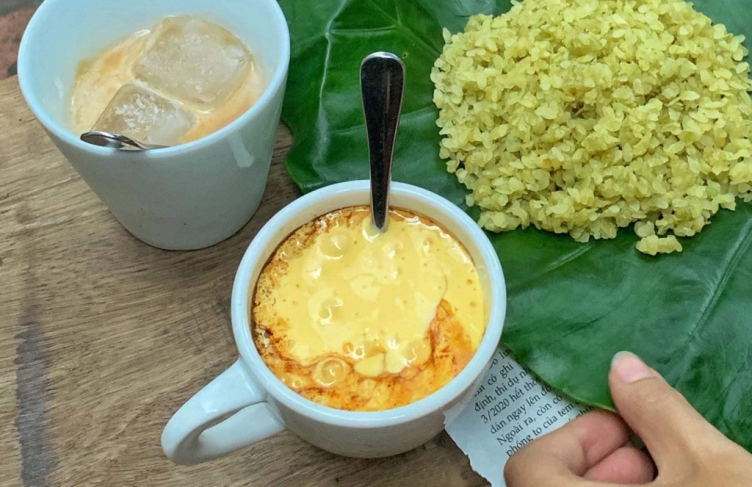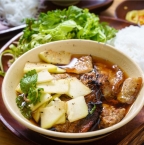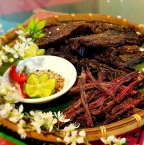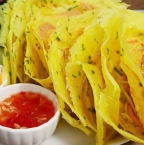Autumn in Vietnam is a season of transformation, bringing not only a refreshing change in weather but also an exceptional culinary experience. As the heat of summer gives way to cooler, crisp air, the country’s food scene comes alive with seasonal flavors and ingredients. From vibrant festivals to comforting traditional dishes, this time of year is perfect for savoring the rich and diverse offerings of Vietnamese cuisine. Let me introduce you to some mouthwatering Vietnamese food that are especially popular in autumn. Let’s dive in and explore!
Table of Contents
Banh trung thu (moon cake) – the symbol of Vietnamese dishes in autumn
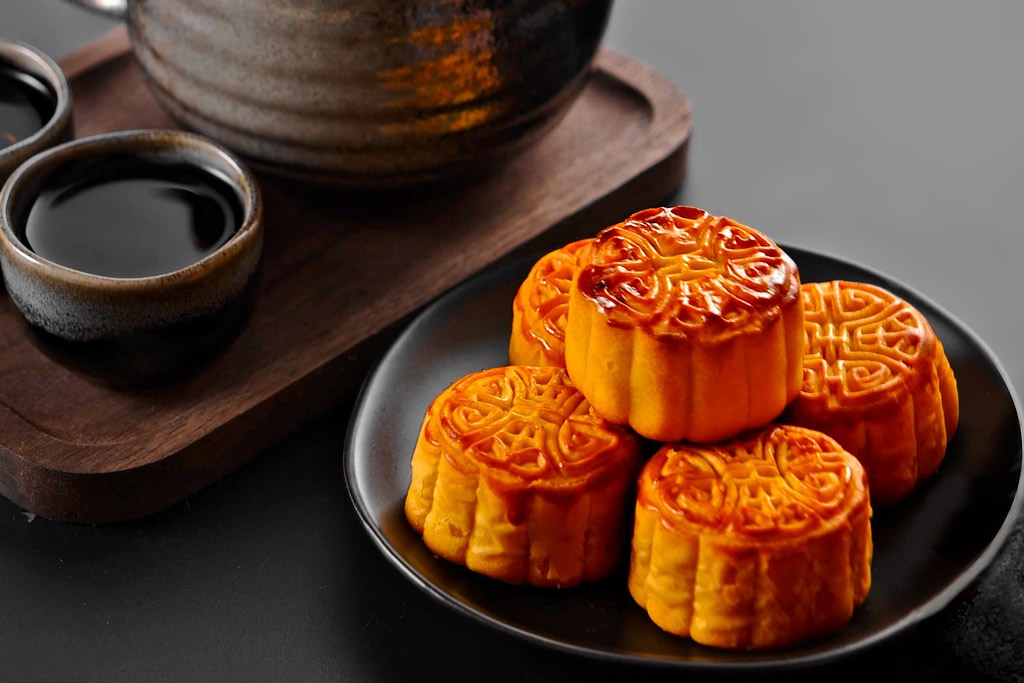
Banh Trung Thu, also known as Mooncakes, is a traditional Vietnamese pastry that is especially popular during the Mid-Autumn Festival. This festival usually falls on the 15th day of the eighth month in the lunar calendar, which is usually in September.
Mooncakes are round or square-shaped pastries with a thin crust, and they often contain sweet fillings like lotus seed paste, red bean paste, or salted egg yolks. The salted egg yolk is a symbolic element, representing the full moon. Mooncakes can vary in flavors and fillings, and there are also modern variations with innovative ingredients.
These pastries are often intricately decorated with intricate designs, and they come in different sizes and shapes. Mooncakes are commonly enjoyed with tea during the Mid-Autumn Festival, and they are also exchanged as gifts among family and friends.
Are you ready to explore the taste of Banh Trung Thu – one of the best Vietnamese food in Autumn?
Xoi com (sticky rice) – An interesting culinary feature of Vietnamese
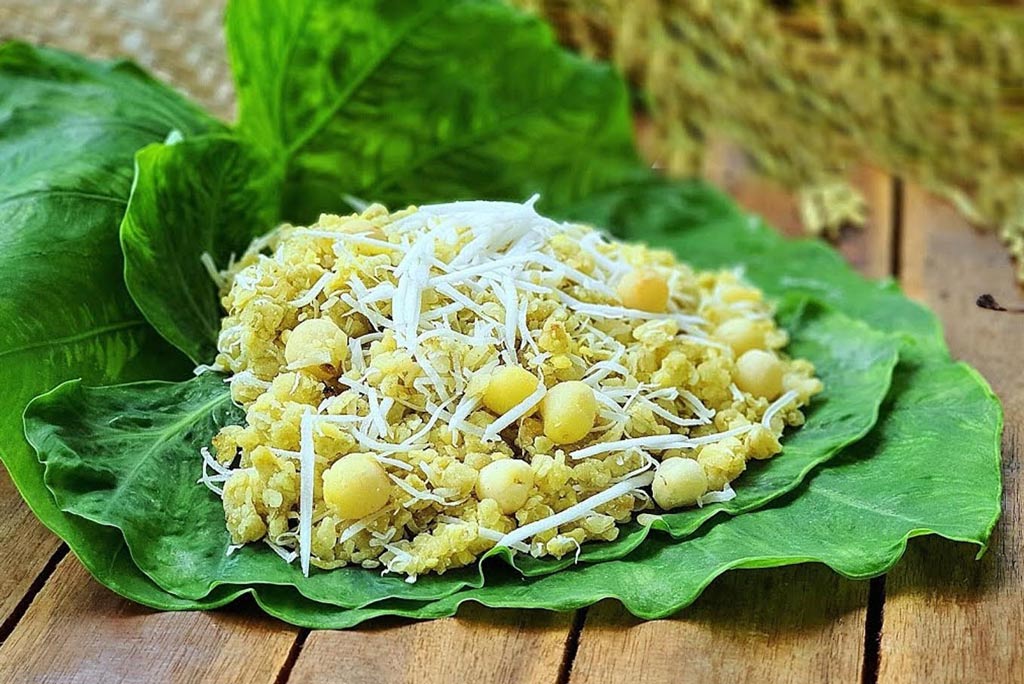
Xoi Com is a traditional Vietnamese dish made from glutinous rice and young rice (cốm). Com is immature, tender rice grains that are harvested early in the season, typically in the Autumn. That’s why the excitement and unforgettable flavor of Com were recorded by author Thach Lam in his work “Mot thu qua cua lua non” to describe the essence of this dish. This dish is especially popular during the harvest season when young rice is available.
The preparation of Xoi Com involves cooking glutinous rice and mixing it with Com to create a greenish hue and a unique flavor. Sometimes, pandan leaves are added during the cooking process to enhance the fragrance and color of the dish. The result is a sticky and aromatic rice dish.
Xoi Com is often enjoyed as a snack or dessert. It can be eaten on its own or paired with various toppings or accompaniments. Some common toppings include mung bean paste, shredded coconut, or sesame seeds. Depending on personal preferences, people may also add sugar, coconut milk, or a drizzle of mật ong (honey) to enhance the sweetness.
Let’s plan your Vietnam tour during the beautiful Autumn to enjoy the more attractive flavor of Xoi Com.
Bun oc – A frugal autumn dish
Bun Oc is considered one of the must-try Vietnamese dishes in Autumn. Bun Oc is a Vietnamese noodle soup featuring snails and has its roots in Vietnamese cuisine. It’s a dish that has evolved and is deeply connected to the culinary traditions of Vietnam.
The exact origin of bún ốc is not precisely documented, but the dish has likely been enjoyed for generations, especially in regions where snails are abundant. Many Vietnamese dishes, including soups and noodle dishes, have evolved from local ingredients and regional preferences.
Bun Oc became popular as a street food and is now commonly found in eateries throughout Vietnam. The combination of rice vermicelli noodles, flavorful broth made with aromatic herbs and spices, and the unique taste and texture of snails contribute to the dish’s popularity.
Are you planning to visit Vietnam during fall, do not miss out on trying the taste of Bun Oc – a dish enjoyed throughout our country that is a comforting and flavorful option for those who appreciate the unique taste of snails and noodle soups.
Pho cuon (spring rolls)
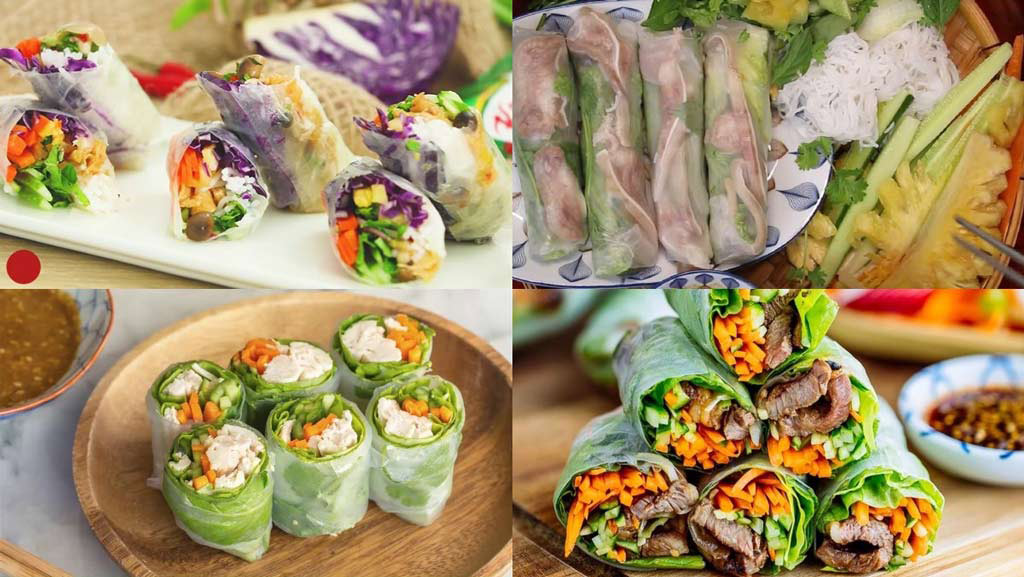
Continuing on the list of Vietnamese food in Autumn, Hanoi Voyages must mention Pho Cuon. This is a famous specialty of Hanoi people with unique ingredients and meticulous processing.
Pho Cuon, also known as Vietnamese fresh Autumn rolls, is a dish that shares some similarities with traditional Vietnamese pho soup but is presented in a different form.
Instead of the usual rice paper used for traditional Autumn rolls, Pho Cuon features a soft and thin sheet of rice noodles that resembles the flat rice noodles used in pho soup. These sheets are often slightly opaque and have a soft, pliable texture.
Furthermore, the filling typically includes ingredients commonly found in traditional Pho, such as thinly sliced beef (usually cooked or grilled), fresh herbs like basil and mint, rice vermicelli noodles, and sometimes lettuce or other greens. The combination creates a refreshing and flavorful mixture.
Pho Cuon is typically served with a dipping sauce. This sauce may include ingredients like fish sauce, hoisin sauce, lime juice, garlic, and chili. The dipping sauce adds extra flavor and a bit of heat to the dish.
Bun rieu
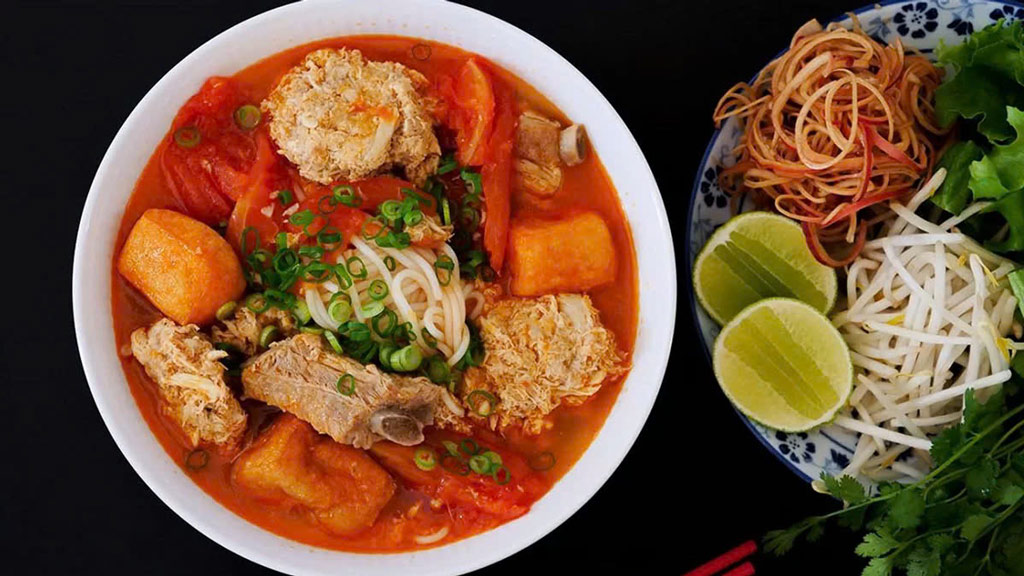
The origin of Bun rieu, like many traditional dishes, is not precisely documented, and its roots are intertwined with the culinary history of Vietnam. However, Bun Rieu is believed to have originated in the North Vietnam area.
The dish has likely evolved as a result of local ingredients, regional preferences, and cultural influences. Bun Rieu is recognized for its distinct flavors, especially the use of crab or shrimp in the broth, which sets it apart from other Vietnamese noodle soups.
The name “Bun rieu” translates to “noodles of crab” in Vietnamese, emphasizing the importance of crab in the dish. The broth is typically made from a combination of crab meat, tomatoes, and various aromatic herbs and spices. The use of fermented shrimp paste (mam tom) also contributes to the unique umami flavor of the broth.
Bun rieu has gained popularity beyond Northern Vietnam and can be found throughout the country with regional variations. Different areas may have their interpretations of Bun Rieu, incorporating local ingredients and culinary traditions.
In the cooler months, Bun Rieu takes center stage with its heartwarming broth made from crab, tomatoes, and aromatic herbs. Vermicelli noodles swim alongside tofu, crab meat, and a delicate crab and tomato-based broth. The result is a harmonious blend of sweet, savory, and tangy notes that will leave you craving more.
Vietnam in Autumn has many delicious dishes which we cannot list in this article. Contact us soon to get more details about your Vietnam holiday, Hanoi Voyages wishes you have a safe and enjoyable trip!











